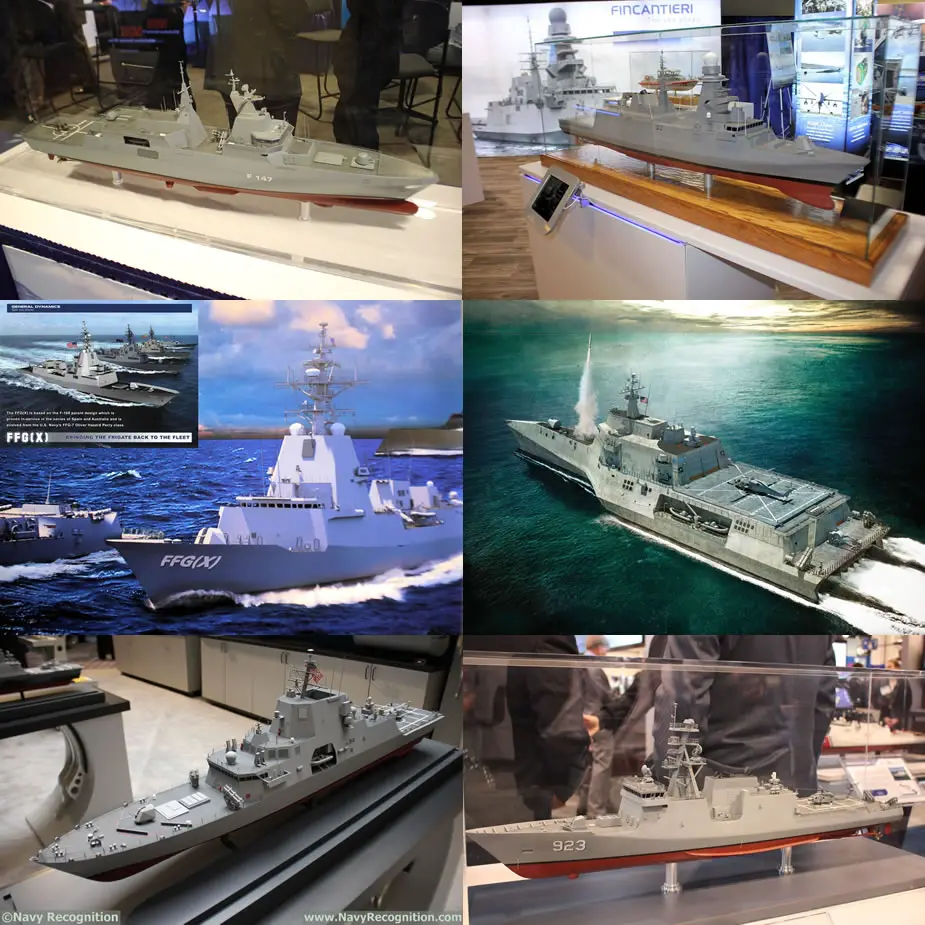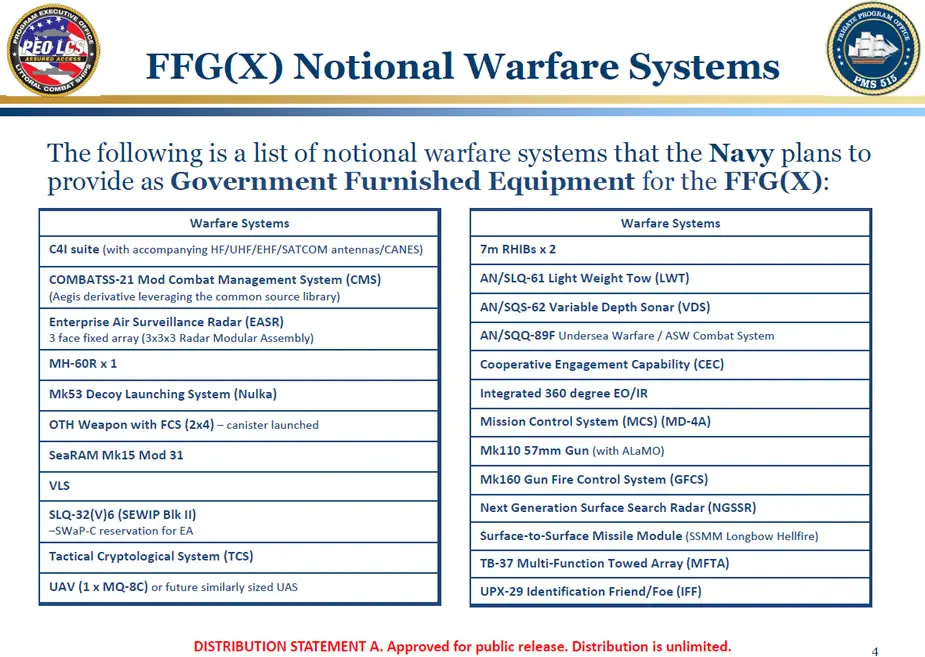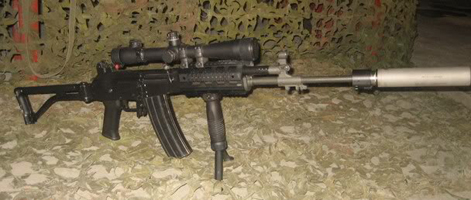
The FFG(X) contenders as seen at SNA 2018 (note: HII Patrol Frigate on the bottom right was NOT on display at the show).
The US Department of Defense released a Request for Information (RFI) in July 2017 to let the industry know what the U.S. Navy is expecting from the FFG(X) Frigate. The RFI said, "A competition for FFG(X) is envisioned to consider existing parent designs for a Small Surface Combatant that can be modified to accommodate the specific capability requirements prescribed by the US Navy."
The U.S. Navy wants a frigate that can keep up with carrier strike groups as well as conduct missions on its own. “The FFG(X) will normally aggregate into strike groups and Large Surface Combatant led surface action groups but also possess the ability to robustly defend itself during conduct of independent operations while connected and contributing to the fleet tactical grid.” The U.S. Navy expects the frigate to be survivable in complex scenarios: "FFG(X) will perform its missions in complex electronic warfare and anti-ship missile threat environments".

During SNA 2018, Dr. Regan Campbell, program manager for the Frigate Program Office (PMS 515) gave an FFG(X) program update.
FFG(X) is an agile, multi-mission platform designed for operation in littoral and blue water environments. Its missions are set to be Anti-Submarine Warfare, Surface Warfare, Electromagnetic Maneuver Warfare, and Air Warfare. FFG(X) will operate independently or integrated with a Task Force to conduct offensive and defensive Surface, Anti-Submarine, and Air Warfare.
According to the program manager, evolving threats in the global maritime environment drove the U.S. Navy to re-evaluate Frigate requirements and pursue a guided missile Frigate. FFG(X) leverages the proposed capabilities of the original Frigate (FF) program while adding:
• Increased Air Warfare (AW) capability in both self-defense and escort roles
• Enhanced survivability (specifically focused on reduced vulnerability)
• Increased Electromagnetic Maneuver Warfare (EMW) capability
Maximizing capabilities while balancing cost
• “High / Low” mix of surface combatant capabilities to meet the increased challenges of future operating environment
To reduce program risk for Detail Design & Construction (particularly with regard to the integration of warfare system elements and cyber architecture) common U.S. Navy systems will be used (EASR radar, COMBATSS21 combat system, C4ISR systems...) and launcher elements (Mk41 and SeaRAM) while encouraging hull, mechanical, and electrical system commonality with other US Navy platforms. Mature parent designs (ship design that has been through production and demonstrated at sea) are required to produce the most cost effective and capable designs to meet FFG(X) requirements
The program manager explained that Conceptual Design Proposals have now been received, with an award expected in late second quarter FY2018 (probably around March 2018).
The U.S. Navy intends to award a Detail Design and Construction contract for the first FFG(X) in 2020, the second ship in 2021 followed by the third and fourth ships in 2022. The "per hull cost" is expected to be $950 millions on average for 20 Frigates in the class.
Continua: https://www.navyrecognition.com/index.p ... ogram.html




